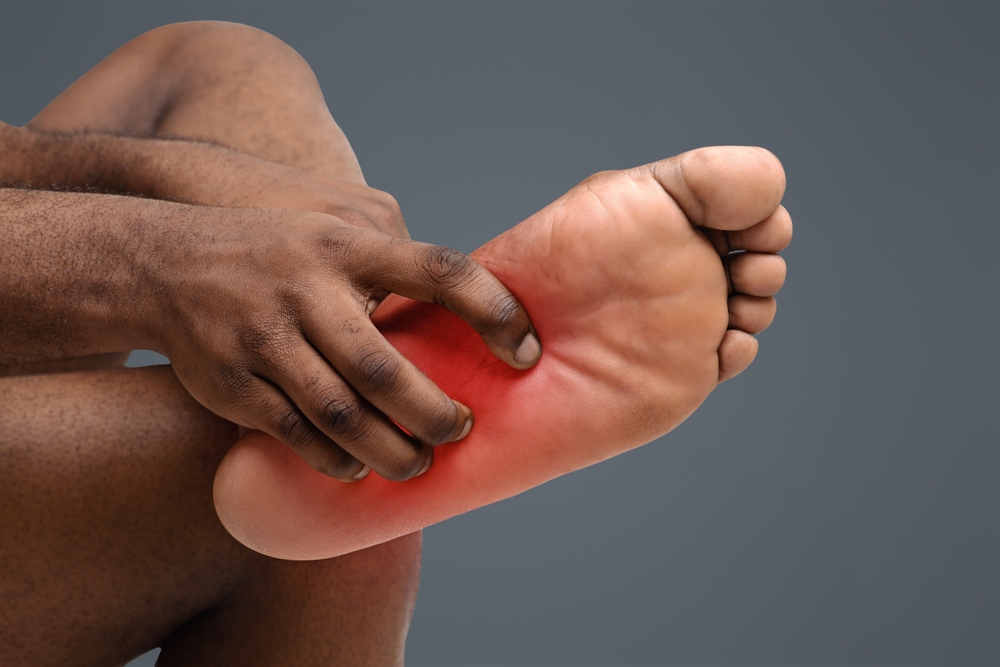You probably check your feet for cuts, blisters, or fungal infections, but there’s an unusual warning sign hiding in your feet that could indicate developing diabetes long before your blood sugar levels become obviously problematic. This overlooked symptom affects millions of people who have no idea their bodies are already struggling with glucose regulation and insulin resistance.
The early signs of diabetes don’t always show up in routine blood tests or obvious symptoms like excessive thirst and frequent urination. Instead, your feet can reveal metabolic changes that are happening silently throughout your body, giving you a crucial opportunity to intervene before diabetes becomes irreversible.
Understanding what to look for in your feet could help you catch prediabetes or early diabetes when lifestyle changes can still prevent or reverse the condition, potentially saving you from a lifetime of medication, complications, and health struggles that affect millions of Americans.
Mysterious foot numbness signals nerve damage progression
One of the earliest and most overlooked signs of diabetes is subtle numbness or tingling in your toes and feet that comes and goes unpredictably. This intermittent sensation is often dismissed as sleeping in an awkward position, wearing tight shoes, or simple aging, but it’s actually indicating that high blood sugar levels are beginning to damage your peripheral nerves.
Diabetic peripheral neuropathy doesn’t start suddenly with complete numbness, it begins with barely noticeable changes in sensation that gradually worsen over months or years. You might notice that your feet feel slightly less sensitive to temperature, pressure, or texture than they used to, changes so subtle that you barely register them consciously.
The tingling sensation, medically called paresthesia, occurs because elevated glucose levels are damaging the protective covering around your nerve fibers. This damage disrupts normal nerve signal transmission, creating the strange sensations that many people experience but rarely connect to blood sugar problems.
What makes this symptom particularly concerning is that nerve damage from diabetes is often irreversible once it progresses beyond the early stages. The numbness and tingling that seem harmless now could progress to complete loss of sensation, making you unable to feel injuries, infections, or other problems that could lead to serious complications.
Temperature sensation changes reveal circulation problems
People developing diabetes often notice that their feet feel unusually cold or that they have difficulty distinguishing between hot and cold temperatures with their feet. This change in temperature perception indicates that diabetes is affecting both your circulation and your nerve function simultaneously.
High blood sugar levels damage the small blood vessels that supply your feet, reducing blood flow and making it difficult for your body to maintain normal temperature regulation in your extremities. Poor circulation also means that your feet receive less oxygen and nutrients, setting the stage for slow healing and increased infection risk.
The combination of reduced circulation and nerve damage creates a dangerous situation where you might not notice temperature extremes that could injure your feet. Many people with developing diabetes accidentally burn or freeze their feet because they can’t accurately sense dangerous temperatures.
This circulation impairment also explains why people with diabetes often have feet that are slow to warm up, remain cold even in warm environments, or feel cold to the touch even when the person doesn’t consciously feel cold. These subtle changes can appear years before diabetes is diagnosed through blood tests.
Unexplained foot pain patterns indicate metabolic dysfunction
Diabetes can cause unusual patterns of foot pain that don’t match typical injury or overuse patterns. You might experience burning sensations, sharp shooting pains, or aching that seems to move around your feet without any obvious cause or injury that would explain the discomfort.
This neuropathic pain is different from mechanical pain caused by injuries or structural problems. It often occurs at rest, may be worse at night, and doesn’t respond well to typical pain relief methods like rest, ice, or over-the-counter medications that work for injury-related pain.
The pain patterns associated with diabetic neuropathy can be intermittent and unpredictable, making them easy to dismiss as random aches and pains rather than recognizing them as warning signs of metabolic problems. Some people describe the sensation as walking on pebbles or having electric shocks in their feet.
This type of pain indicates that your peripheral nerves are being damaged by fluctuating blood sugar levels, even if your fasting glucose tests still fall within normal ranges. The nerves in your feet are often the first to show damage because they’re the longest nerves in your body and most vulnerable to metabolic stress.
Slow healing reveals immune system compromise
Minor cuts, scrapes, or blisters on your feet that take weeks to heal or seem to get worse instead of better can indicate that diabetes is compromising your immune system and circulation. Most people expect minor foot injuries to heal within a few days to a week, but diabetes significantly slows this process.
High blood sugar levels impair white blood cell function, making it harder for your body to fight off infections and promote healing. The elevated glucose in your bloodstream also provides an ideal environment for bacteria to multiply, increasing the risk that minor wounds will become infected.
Reduced circulation to your feet means that healing nutrients and immune cells have difficulty reaching injured tissues, while waste products and toxins accumulate in the area, further slowing recovery. This creates a cycle where minor injuries become chronic problems.
The slow healing associated with diabetes often starts subtly, with cuts taking a few extra days to close or seeming to improve and then worsen repeatedly. This pattern of delayed or interrupted healing is often one of the first signs that blood sugar levels are affecting your body’s normal repair processes.
Skin changes reflect systemic metabolic stress
Diabetes causes distinctive changes in foot skin that many people attribute to aging, dry weather, or poor skincare when they’re actually indicators of metabolic dysfunction. The skin on your feet might become unusually dry, thick, or prone to cracking despite normal moisturizing efforts.
High blood sugar levels affect skin cell turnover and collagen production, leading to skin that’s less elastic, more fragile, and prone to breakdown. You might notice that your feet develop calluses more easily, that existing calluses become thicker, or that your skin seems to crack or split more readily than it used to.
Color changes in your feet can also indicate diabetic complications, including unusual darkening of the skin, persistent redness, or areas that seem to have reduced color or circulation. These changes reflect the impact of diabetes on blood vessels and skin cell metabolism.
Fungal infections, particularly athlete’s foot or toenail fungus, may become more frequent or persistent in people developing diabetes because elevated blood sugar creates conditions that favor fungal growth while impairing the immune system’s ability to control these infections.
Balance problems stem from nerve damage you can’t feel
Diabetes affects the proprioceptors in your feet, specialized nerve endings that tell your brain where your feet are positioned and how they’re moving. When these nerves are damaged by high blood sugar, you may notice subtle balance problems or feel less steady on your feet without understanding why.
You might find yourself reaching for handrails more often, feeling less confident on uneven surfaces, or noticing that you stumble or lose your balance more frequently than you used to. These changes often develop so gradually that you adapt without realizing your balance has deteriorated.
The loss of position sense in your feet makes it harder to navigate in the dark, walk on unfamiliar surfaces, or maintain balance during activities that require precise foot placement. This increased fall risk can lead to injuries that are more serious because of the slow healing associated with diabetes.
Many people attribute balance changes to aging, but when they occur in combination with other foot symptoms, they may indicate that diabetes is affecting the complex network of nerves that maintain stability and coordination.
Early detection and intervention can prevent permanent damage
The key to preventing serious diabetic foot complications is recognizing these early warning signs and taking action before nerve damage and circulation problems become irreversible. Many of the foot symptoms associated with developing diabetes can be improved or prevented from worsening with proper blood sugar control.
If you’re experiencing any combination of these foot symptoms, it’s crucial to have your blood sugar levels checked, including fasting glucose, oral glucose tolerance test, and hemoglobin A1C. Standard glucose tests might miss early insulin resistance that’s already affecting your nerves and circulation.
Lifestyle interventions including dietary changes, regular exercise, weight management, and stress reduction can significantly improve blood sugar control and may reverse early nerve damage if implemented before the damage becomes permanent.
Working with healthcare providers who understand the connection between foot symptoms and diabetes can help you develop a comprehensive approach to blood sugar management that protects your feet and prevents progression to more serious complications.
The unusual signs hiding in your feet aren’t just minor annoyances, they’re early warning signals that your metabolism is struggling and needs attention before permanent damage occurs.
















